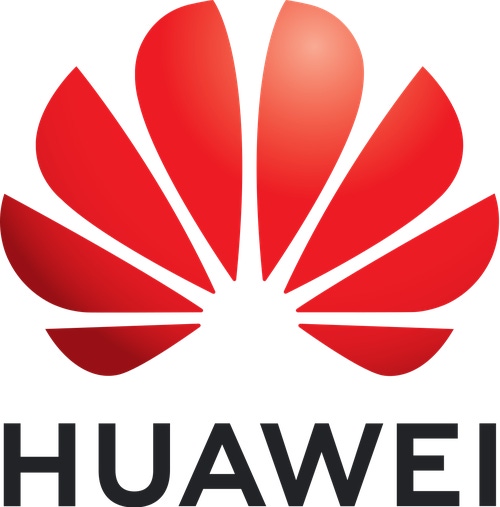OTN to CO: Helping Operators Build a Per-Bit Cost-Effective Metro Bearer Network
With increasing network traffic and diversified services, a per-bit cost-effective solution is crucial for metro bearer networks.
January 4, 2019

With increasing network traffic and diversified services such as 5G, 4K, VR, Data Center Interconnect (DCI), and IoT, operators are hoping that bearer networks will be able to provide ultra-large capacity for mass connections and traffic floods.
A bearer network with ultra-large capacity, however, requires considerable equipment room space and high power consumption in addition to high O&M costs and annual OPEX. From the perspective of resource allocation, the resources owned by operators cannot be expanded infinitely. Specifically, the optical fiber and spectrum resources, equipment rooms and site space, power supply capabilities, and O&M manpower are all limited.
The following are key factors for operators to cope with the challenges brought by surging new services and rapid traffic growth:
Achieving the maximum single-fiber capacity under limited fiber and spectrum resources
Ensuring the highest per-bit integration and per-bit power consumption under the limited site space and power supply capabilities
Improving network maintenance efficiency
Continuously reducing per-bit O&M costs by using automatic and intelligent network O&M with the same or even less O&M manpower All the preceding requirements on the bearer network can be summarized as the pursuit of the optimal per-bit transmission cost. Therefore, the next-generation integrated service bearer network will definitely be constructed based on a per-bit cost-effective solution, which will also be the only way for operators to cope with the challenges of the new era.
OTN to CO is the inevitable choice for metro network evolution
A central office (CO) serves as an entry for various services to access an operator's network, and plays an increasingly important role in operators' metro networks. To meet the requirements for bearing new services, operators urgently need to improve the bearer capability of COs to prevent the metro network from becoming the bottleneck for integrated service bearing. Based on operators' requirements for the per-bit cost-effective solution of the bearer network, OTN to CO becomes the inevitable choice for metro network evolution.
First, OTN inherently has ultra-large bandwidth bearing capabilities and perfectly matches the requirements for the maximum single-fiber capacity, highest per-bit integration, and minimum per-bit power consumption. With the introduction of intelligent technologies such as ASON and SDN, OTN has automatic and intelligent operation, administration and maintenance (OAM) capabilities, which help operators reduce per-bit O&M costs and improve O&M efficiency. Second, the concept of "OTN to CO" aims to deploy OTN devices closer to end users, simplify network architecture, and build a large-capacity and one-hop metro integrated bearer network between COs and DCs. This will help meet the bandwidth and experience requirements of 5G, video, and cloud private line services. Third, OTN to CO provides a simplified transport platform with all-service bearing capabilities. This platform can carry fixed services, mobile services, and private line services in a unified manner, saving a large amount of equipment investment for operators.
The following uses the metro bearer network of a typical European operator as an example. At the early stage, ring topologies are used to converge services layer by layer and implement hop-by-hop forwarding, which is efficient in case of light metro traffic. In the 4K video era, however, such networking and topology have become the bottleneck for service development because of low bandwidth and efficiency, in addition to high latency and costs. Therefore, OTN devices are introduced to greatly reduce per-bit transmission costs and simplify network architecture by replacing the ring topology with a tree topology. This reduces network layers and achieves one-hop connection to IP nodes without intermediate aggregation or forwarding. OTN to CO provides the benefits of high bandwidth, low latency, and zero packet loss.
Figure 1:
 Traditional network
Traditional networkFigure 2:
 Simplified network
Simplified networkTypical network construction model and development trend in Europe.
The OTN to CO metro bearer network architecture has the following features:
Network flattening: This network architecture reduces the network layers. OTN devices are used at the aggregation layer to substitute for aggregation switches, reducing the network layers from 5-layer to 3-layer. This meets the requirements of new services such as video and 5G services for high bandwidth and low latency.
Network convergence: This network architecture reduces the number of nodes. It converges BRAS, PE, and SR nodes, and converges multi-level metro aggregation networks into one network.
Bearer device convergence: OTN devices support hybrid transmission of OTN, packet, and VC services. SDH and WDM devices are converged to support smooth evolution and upgrades of legacy SDH networks and meet the ETH requirements of E-Line service interfaces and unified transmission requirements of various services.
Automation and intelligence: This network architecture lowers network complexity, provisions SDN services quickly, and virtualizes centralized O&M, online management, dynamic adjustment, and fault management.
OTN to CO helps operators build a future-oriented optimal experience metro bearer network.
OTN to edge builds simplified IP+OTN architecture to bring the following benefits:
Provides ultra-high bandwidth (N*100G/400G/1T) to ensure sufficient pipe resources.
Provides optimal experience, low latency, and zero packet loss, meeting the interconnection requirements of video and DC services.
Lower TCO
Hierarchical architecture and SDN/NFV-oriented network evolution
The concept of "OTN to CO" has been recognized by more than 200 operators worldwide. By the third quarter of 2018, more than 50 European operators, including Vodafone, Telefonica, Orange, and Belgacom, have put "OTN to CO" into commercial use. It is expected to have been implemented by 50% of COs in Europe by the end of 2018. China Mobile is proactively deploying "OTN to CO". Currently, more than 20,000 COs have been covered, reaching a coverage rate of 45%. In the next 3 years, China Mobile aims to achieve over 90% CO coverage.
You May Also Like










